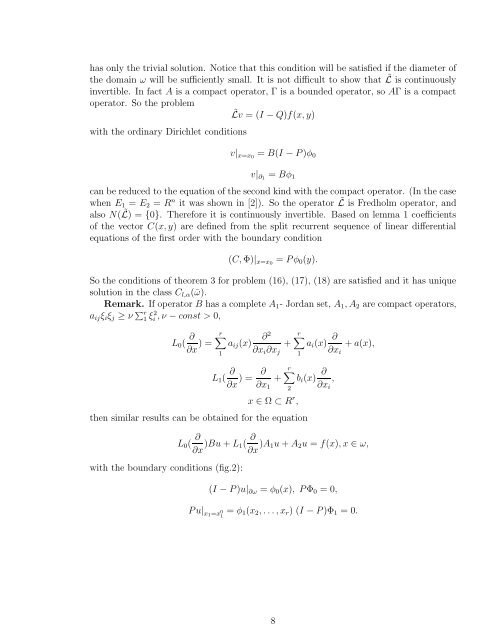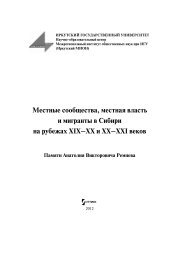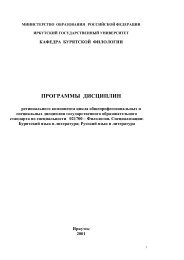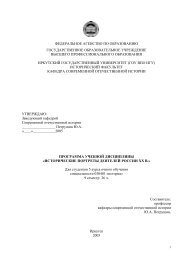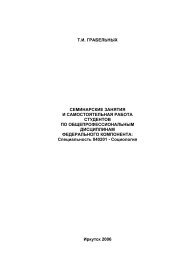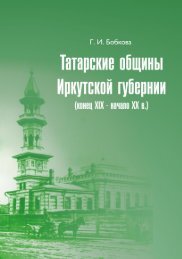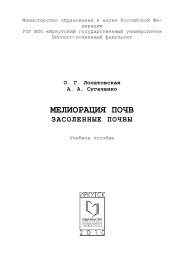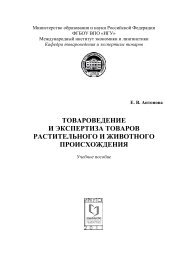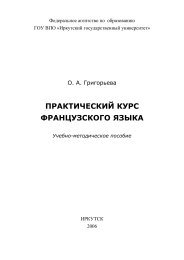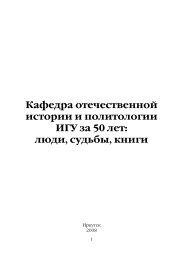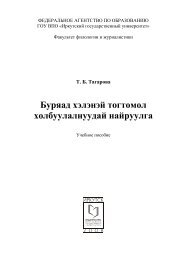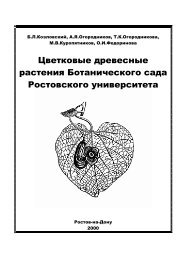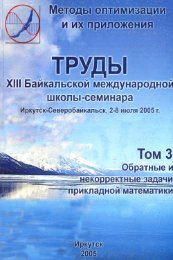Difference-differential Equations with Fredholm Operator in the Main ...
Difference-differential Equations with Fredholm Operator in the Main ...
Difference-differential Equations with Fredholm Operator in the Main ...
You also want an ePaper? Increase the reach of your titles
YUMPU automatically turns print PDFs into web optimized ePapers that Google loves.
has only <strong>the</strong> trivial solution. Notice that this condition will be satisfied if <strong>the</strong> diameter of<br />
<strong>the</strong> doma<strong>in</strong> ω will be sufficiently small. It is not difficult to show that ˜L is cont<strong>in</strong>uously<br />
<strong>in</strong>vertible. In fact A is a compact operator, Γ is a bounded operator, so AΓ is a compact<br />
operator. So <strong>the</strong> problem<br />
˜Lv = (I − Q)f(x, y)<br />
<strong>with</strong> <strong>the</strong> ord<strong>in</strong>ary Dirichlet conditions<br />
v| x=x0 = B(I − P )φ 0<br />
v| ∂1 = Bφ 1<br />
can be reduced to <strong>the</strong> equation of <strong>the</strong> second k<strong>in</strong>d <strong>with</strong> <strong>the</strong> compact operator. (In <strong>the</strong> case<br />
when E 1 = E 2 = R n it was shown <strong>in</strong> [2]). So <strong>the</strong> operator ˜L is <strong>Fredholm</strong> operator, and<br />
also N( ˜L) = {0}. Therefore it is cont<strong>in</strong>uously <strong>in</strong>vertible. Based on lemma 1 coefficients<br />
of <strong>the</strong> vector C(x, y) are def<strong>in</strong>ed from <strong>the</strong> split recurrent sequence of l<strong>in</strong>ear <strong>differential</strong><br />
equations of <strong>the</strong> first order <strong>with</strong> <strong>the</strong> boundary condition<br />
(C, Φ)| x=x0 = P φ 0 (y).<br />
So <strong>the</strong> conditions of <strong>the</strong>orem 3 for problem (16), (17), (18) are satisfied and it has unique<br />
solution <strong>in</strong> <strong>the</strong> class C l,α (¯ω).<br />
Remark. If operator B has a complete A 1 - Jordan set, A 1 , A 2 are compact operators,<br />
a ij ξ i ξ j ≥ ν ∑ r<br />
1 ξi 2 , ν − const > 0,<br />
L 0 ( ∂ r∑<br />
∂x ) = a ij (x) +<br />
∂x i ∂x j<br />
1<br />
∂ 2<br />
r∑<br />
1<br />
a i (x) ∂<br />
∂x i<br />
+ a(x),<br />
L 1 ( ∂<br />
∂x ) =<br />
∂<br />
∂x 1<br />
+<br />
r∑<br />
2<br />
x ∈ Ω ⊂ R r ,<br />
<strong>the</strong>n similar results can be obta<strong>in</strong>ed for <strong>the</strong> equation<br />
<strong>with</strong> <strong>the</strong> boundary conditions (fig.2):<br />
b i (x) ∂<br />
∂x i<br />
,<br />
L 0 ( ∂<br />
∂x )Bu + L 1( ∂<br />
∂x )A 1u + A 2 u = f(x), x ∈ ω,<br />
(I − P )u| ∂ω = φ 0 (x), P Φ 0 = 0,<br />
P u| x1 =x 0 1 = φ 1(x 2 , . . . , x r ) (I − P )Φ 1 = 0.<br />
8


